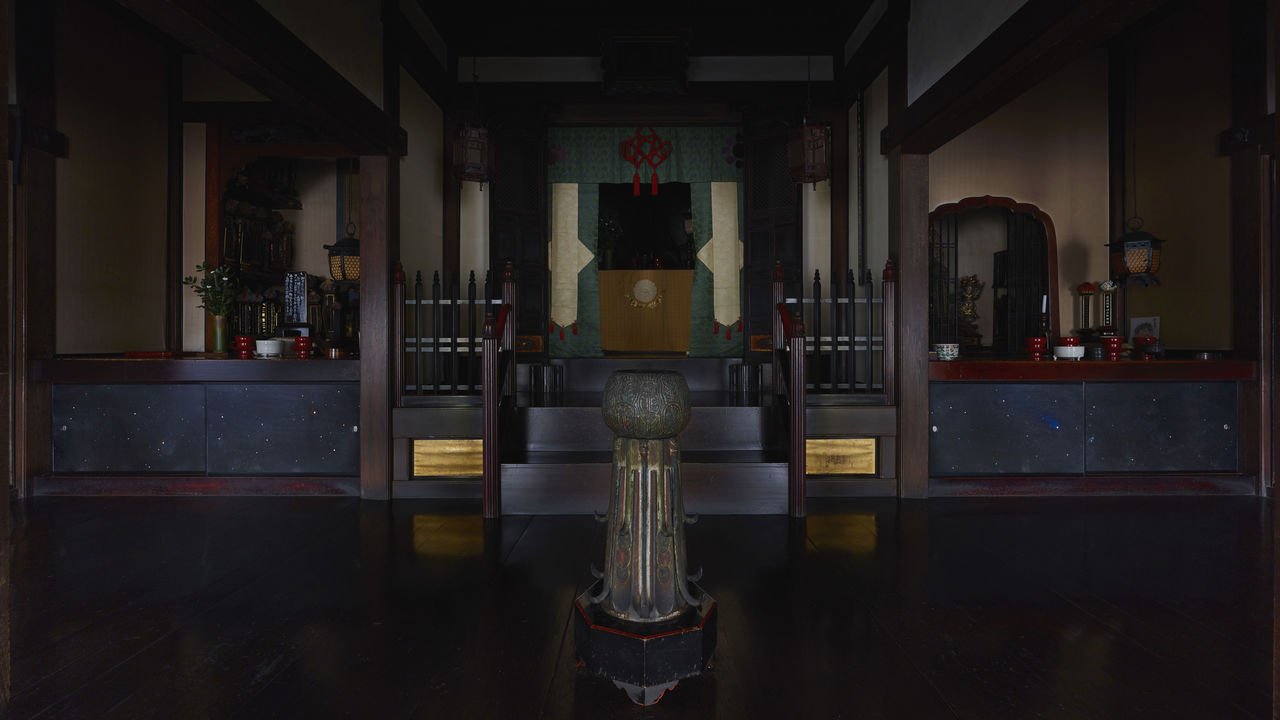
Yamaguchi Kazuya’s “Sky Flower”: Dark Art for Shinjuan to Reveal Itself Over Centuries
Guideto Japan
- English
- 日本語
- 简体字
- 繁體字
- Français
- Español
- العربية
- Русский
A Beam of Light in the Darkness
At an hour when the sky is just starting to lighten, Yamaguchi Kazuya is still sitting and meditating alone in the dimly lit main hall of Shinjuan. In a half-lidded manner, reminiscent of a statue of the Buddha, he banishes all worldly thoughts from his mind, taking one quiet deep breath after another. He speaks of seeing “particles of darkness” at such times, an experience which inspired the artwork he is contributing to the Shinjuan project.
His creation begins with making paper by hand. Seeking the ganpi, a shrub referred to in the middle Edo-period Wakan sansei zue almanac as the source of the “king of paper,” Yamaguchi made his way into the mountains in the Minami-Kaga region of Ishikawa Prefecture. There, with primitive techniques, he beat out the fibers, made paper pulp with mountain spring water, and formed the resulting pulp into sheets of ganpi paper.
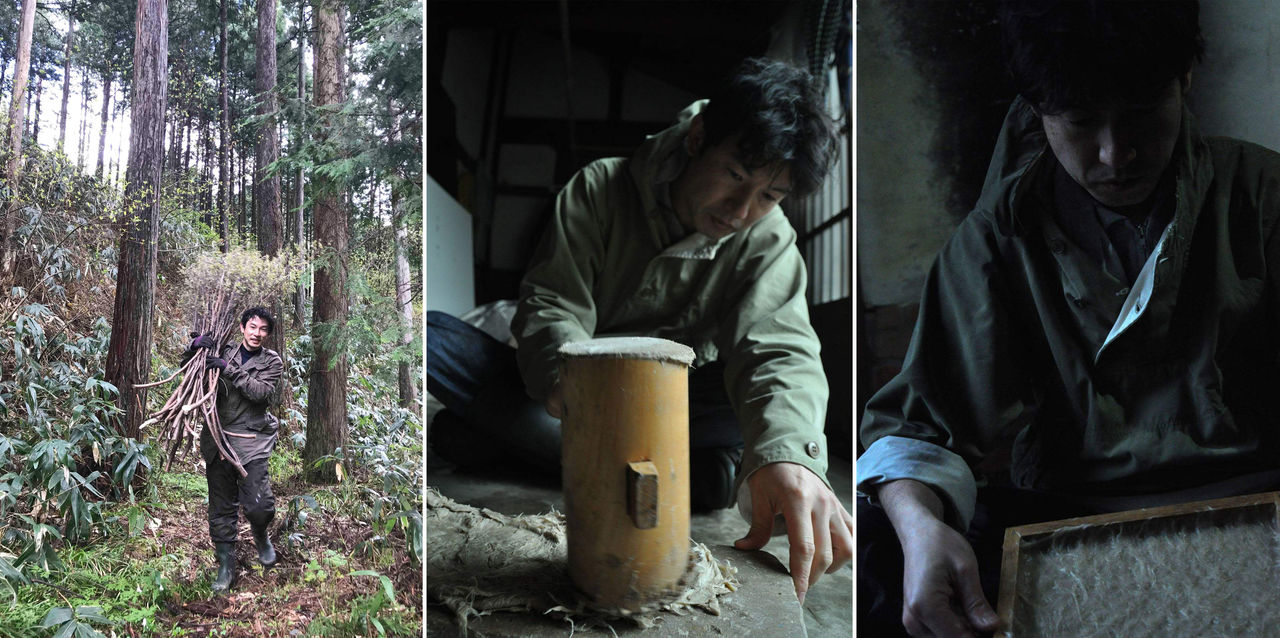 From left: the artist harvesting ganpi wood on a mountainside, beating fibers with a mallet, and forming paper with spring water. (Photos courtesy of Yamaguchi Kazuya)
From left: the artist harvesting ganpi wood on a mountainside, beating fibers with a mallet, and forming paper with spring water. (Photos courtesy of Yamaguchi Kazuya)
He coats this ganpi paper by blowing ink made from pine soot and glue onto the paper until it is jet black. This is followed by pressing pieces of silver leaf one at a time onto the blackened paper, applying another coat of the ink on top of that. Repeating this work many times causes the appearance of faint particles of light—reflecting from the bits of silver leaf that still show through, inversely to the deepening darkness—suggesting light reaching us from stars thousands of light years away. As a finishing touch, the artist lights custom-made fireworks including compounds of dyes and pigments, sending flares shooting across the surface. If one squints, one can see hints of blue and red embedded here and there in the blackness. The theme of the work is “the eternity that lies beyond an instant.”
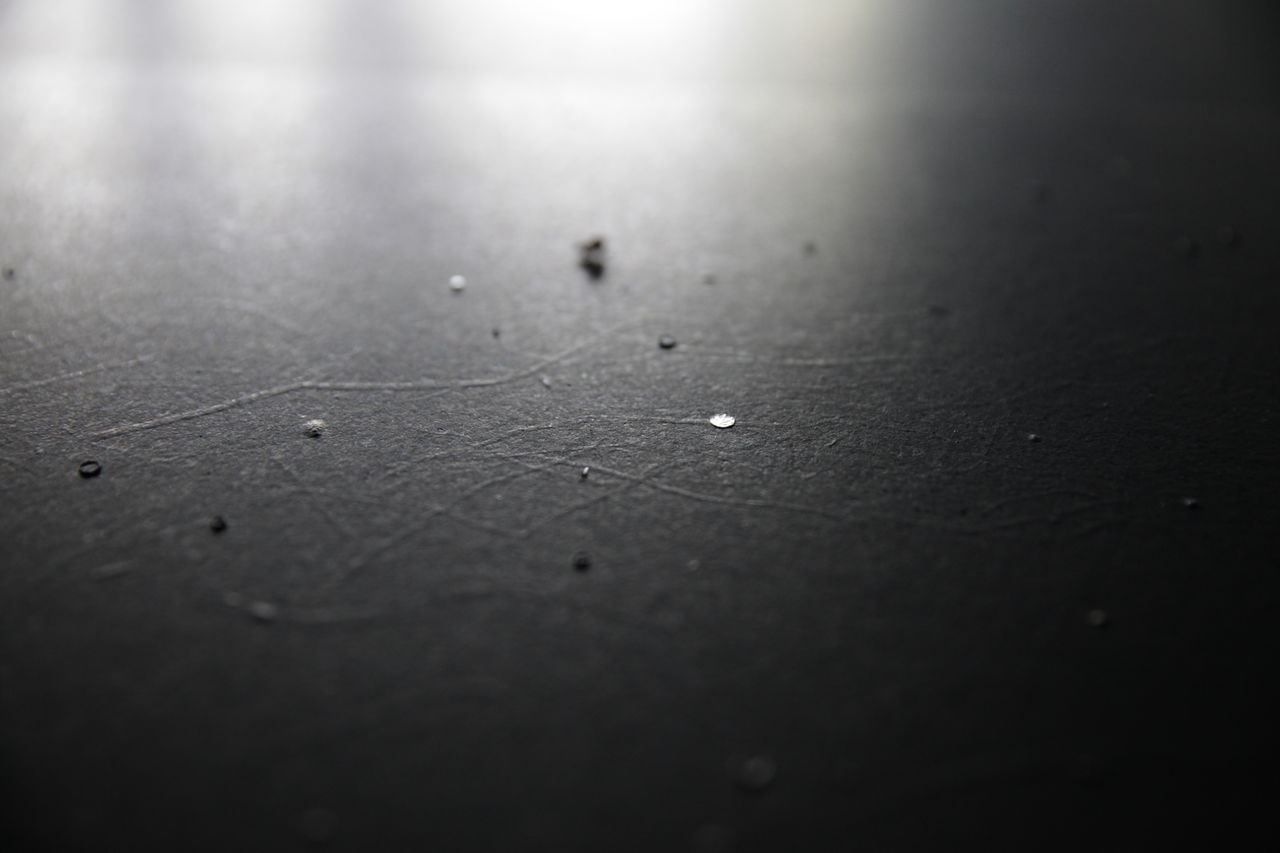 Silver leaf is applied to ganpi paper blackened with pine-soot ink. (Photo courtesy of Yamaguchi Kazuya)
Silver leaf is applied to ganpi paper blackened with pine-soot ink. (Photo courtesy of Yamaguchi Kazuya)
“Though this picture will be taken from me and installed in Shinjuan,” says Yamaguchi, “it will keep on changing ever after.” The silver leaf that appears like starlight may well change color over time, so that the stars embedded in the sooty ink may present new and different aspects someday, giving the darkness of this fusuma illustration new depths.
Yamaguchi’s fusuma illustration is installed in the Butsuma, a room to the north of the main hall where the building’s Buddhist altar is kept. Visitors come into this room, where a wooden idol of Ikkyū-san is enshrined, rarely at best. Normally, only the superior and other bonzes enter there. When I ask Yamaguchi whether it bothers him that hardly anyone will see his work, he serenely replies: “No, I like that. I’m honored simply by being allowed to place my art in the sacred ground closest to Ikkyū-san.” For Yamaguchi, this project may well have been an expression of an infatuation with the “black hole” that is the Butsuma, normally unknown to all but the temple’s initiates.
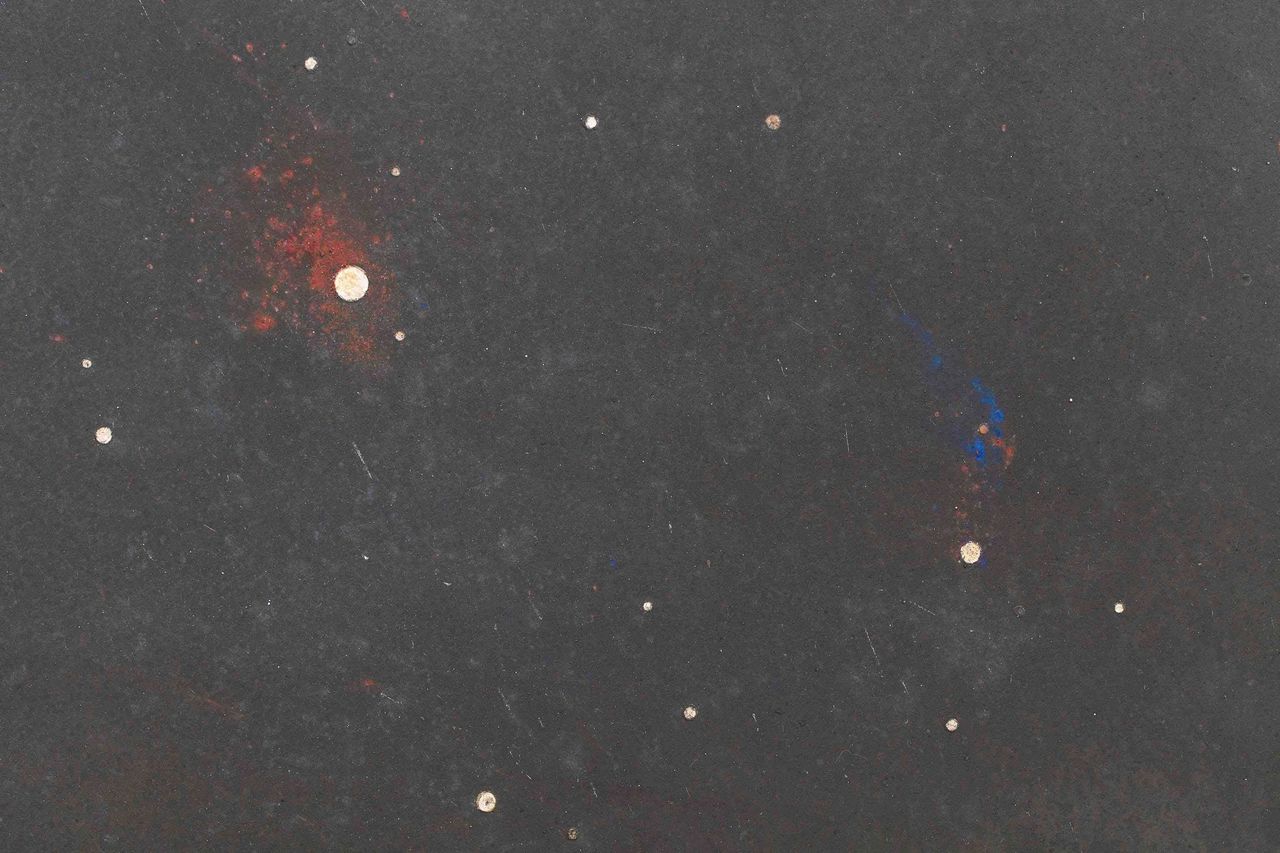 A portion of the fusuma illustration. The colors may change over time, causing these stars to show different aspects. (Photo courtesy of Yamaguchi Kazuya.)
A portion of the fusuma illustration. The colors may change over time, causing these stars to show different aspects. (Photo courtesy of Yamaguchi Kazuya.)
Eternity in a Flash
It was a professional boxer named Komatsu Noriyuki, now deceased, who started Yamaguchi on his eventual path to Shinjuan.
Yamaguchi was transfixed by a boxing match between Komatsu and a boxer named Tatsuyoshi Jōichirō that he happened to catch on a TV in the changing room of a public bath. He stared intently, determined not to miss an instant of those chiseled figures in that taut, confined space, each determined to put the other down for the count. Yamaguchi says the match was a thing of beauty, sending him into ecstasies, as though watching dancing beasts. The next thing he knew, tears were running down his cheeks.
Thereafter, Yamaguchi met Komatsu at a boxing gym in Osaka, and would spend the next six years taking pictures of him. In April 2009, a month before a match with boxer Kameda Daiki, Komatsu engaged in several days of meditation at Shinjuan to build up his concentration. That same month, on a visit to the falls at Ōtsu in Shiga Prefecture, he fell by accident into the pool at the base of the falls and died.
In an attempt to capture this magnificent beast who had died so unexpectedly, Yamaguchi published a book of his photos of Komatsu. Seeing the book, Yamada Sōshō, superior of Shinjuan, offered one of the fusuma illustration jobs to Yamaguchi.
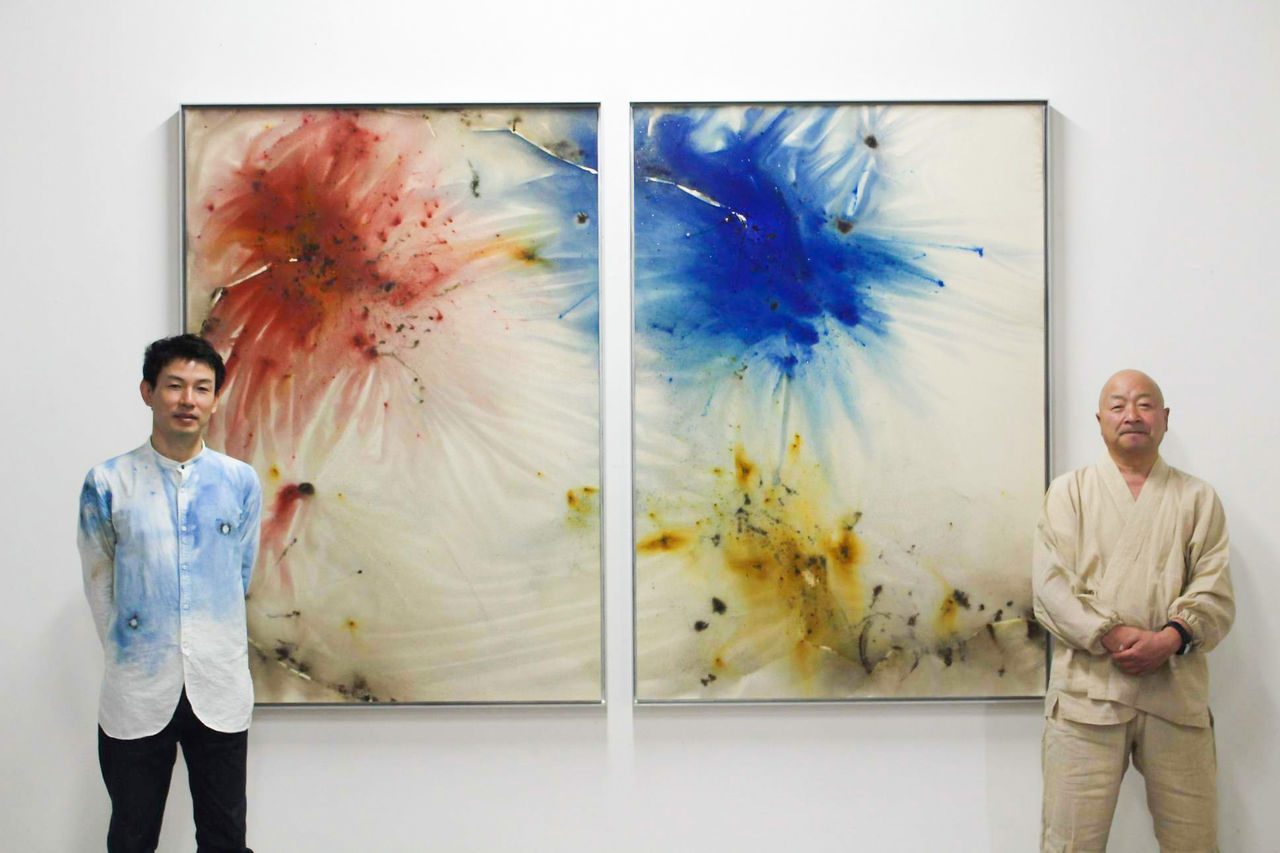 Yamaguchi and Shinjuan superior Yamada, standing before another of the artist’s creations. (© Tsunoda Ryūichi)
Yamaguchi and Shinjuan superior Yamada, standing before another of the artist’s creations. (© Tsunoda Ryūichi)
In all the vastness of the universe, human beings are infinitesimal presences. Having seen the intense flash that one such person nonetheless briefly unleashed, Yamaguchi sought to capture the brilliance of that instant in the smaller universe of his fusuma illustration. It seeks to express opposing pairs of coexisting concepts—eternity and an instant, darkness and light—in a changing spacetime, over centuries. This is only the beginning of this magnificent conceit.
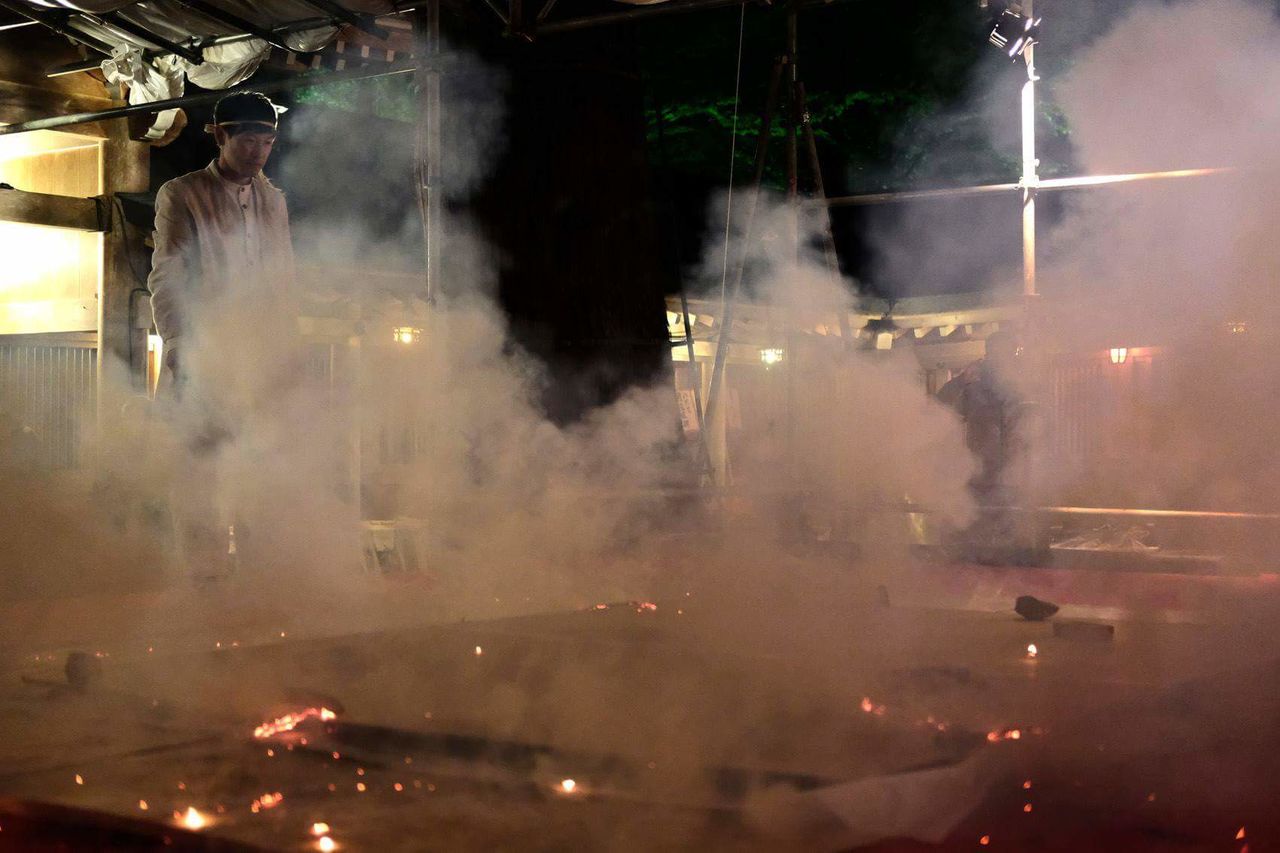 Lighting the custom-made fireworks to complete the creation. Depicted is a dedication ceremony in Echizen for the lighting of the picture. (Photo courtesy of Yamaguchi Kazuya)
Lighting the custom-made fireworks to complete the creation. Depicted is a dedication ceremony in Echizen for the lighting of the picture. (Photo courtesy of Yamaguchi Kazuya)
Related > New Art in an Old Setting: The Shinjuan Painting Project at Daitokuji, Kyoto
Daitokuji Shinjuan Special Viewing
- Dates: September 1 to December 16, 2018 (closed October 19–21)
- Hours: 9:30 am to 4:00 pm (last entry)
- Fee: Adults ¥1,200, junior high and high school students ¥600, ages 12 and under free (when accompanied by an adult). Note: preschool age children will not be admitted to the Tsūsen’in study or the Teigyokuken tea ceremony room.
- Access: from Kyoto station, take the Kyoto municipal subway Karasuma line to Kitaōji. Transfer there to Kyoto city bus routes 1, 101, 102, 204, 205 or 206 and get off at Daitokuji-mae. From there, 7 minutes on foot (total travel time about 35 minutes).
- Daitokuji Shinjuan special viewing website
- Crowdfunding website for Kyoto Shinjuan (Japanese language only)
(Originally published in Japanese. Photos courtesy of Yamaguchi Kazuya, Kyoto Shunjū, Asahi Shimbun, and Tsunoda Ryūichi. Banner photo: “Sky Flower,” installed to either side of the wooden idol of Ikkyū-san enshrined in the depths of the Buddhist altar room.)